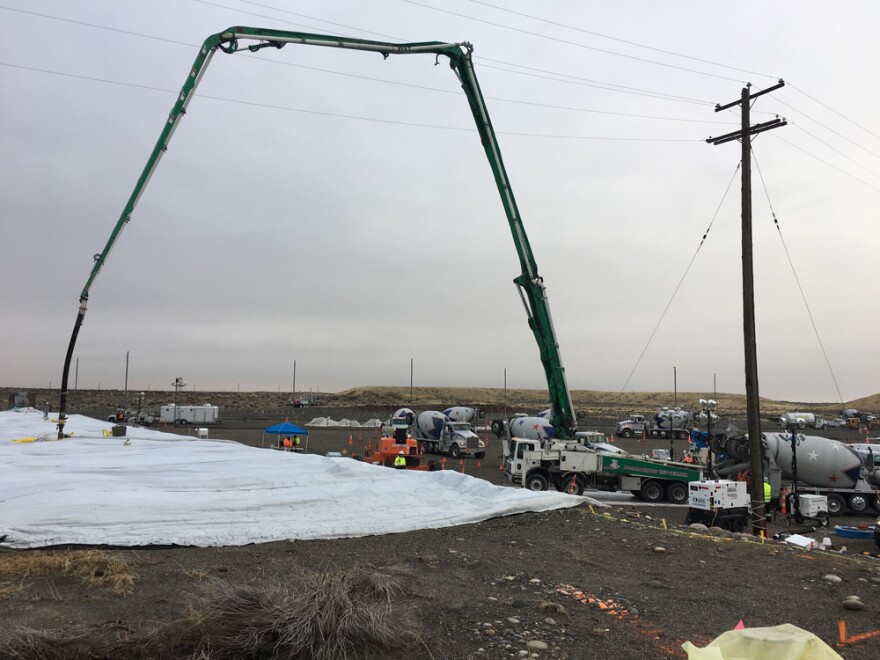Back in May, a train tunnel at the Hanford nuclear site partially collapsed. Federal contractors have now just finished filling it up with grout. It took about 520 truck loads of grout to fill the tunnel.
Crews had been doing the work mostly at night since early October.
During the Cold War, the train tunnels were part of the PUREX Plant, a large plutonium processing facility. They were intended to store huge pieces of equipment that were worn out and highly contaminated with radioactive waste.
The tunnels have been of great concern, because further collapse could hurt workers or throw up a plume of radioactive dust that could escape offsite.
Ron Skinnarland, a manager with Washington’s Department of Ecology, watches over much of Hanford’s cleanup including the tunnels.
“I think the workers at the site did a great job in terms of doing this very risky work,” he said. “I think we’re just really happy that Tunnel number 1 is in a safer state now.”
But now that this grout’s in place, it might be difficult to remove safely. Northwest tribes—especially the Yakama Nation—are concerned that the site will linger without further cleanup.
Federal officials expect to have a public plan for the second tunnel of waste in early December.


